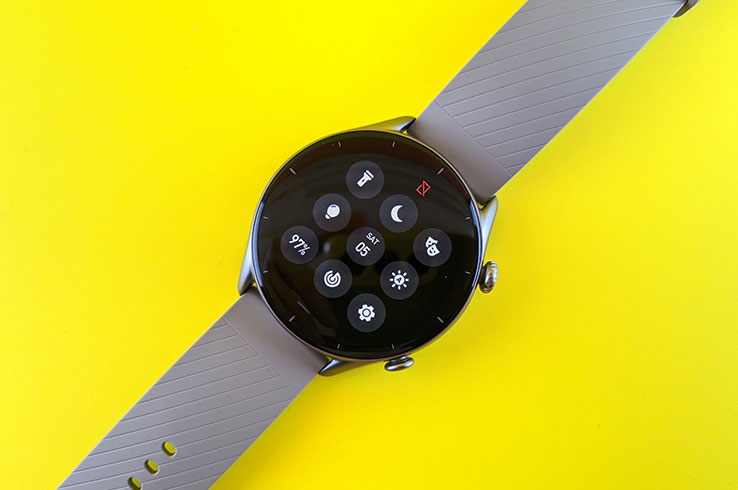It’s highly probable that a new fitness tracker will have been released into the market by the time you finish reading this sentence. The rapid pace of innovation means you now have an abundance of options, with increasingly advanced devices designed to assist you in your fitness journey and monitor your progress. Yet, the multitude of features on offer can often be overwhelming, presenting a challenge in deciphering the capabilities of the newest fitness tracker. Today’s fitness watches have undergone significant enhancements, boasting greater speed and power than ever before. They have become so packed with features that traditional terminology no longer suffices. In the past, heart-rate monitors, activity trackers, pedometers, and GPS watches were distinct devices. However, throughout this article, we will use the term ‘fitness tracker’ to describe the inclusive wrist-worn device, as it has evolved to encompass the majority, if not all, of the functionalities previously managed by separate units.
What are your expectations from a fitness tracker?
While having a device that offers a multitude of capabilities is certainly appealing, determining which specific features matter most to you can assist in streamlining your options. If you happen to be a technology enthusiast who revels in devices with boundless possibilities, that inclination can also guide your decision-making process.
There are instances where it is more sensible to choose a basic or dedicated device over a fitness tracker
If your primary goal is to simply track your steps or time your runs, opting for traditional fitness technologies like a pedometer or a running watch can fulfill your needs at a much lower cost compared to a fitness tracker. In the realm of specific activities, a specialized device designed for a particular purpose tends to outperform a multi-functional fitness tracker in terms of effectiveness. For instance, if your main focus is navigation during hiking, handheld GPS units would be a suitable choice (check out our guide on “How to Choose a GPS” for helpful purchasing tips). Similarly, if you’re an avid cyclist, considering bike computers would be advantageous (refer to our advice on “How to Choose a Bike Computer” for guidance).
Harnessing the capabilities of your smartphone as a fitness tracker
By utilizing GPS-enabled phones, you can leverage third-party apps such as Strava and Mapmyrun to monitor your fitness metrics, track your progress, and even assist with navigation. These apps empower you to download and evaluate your data, while also providing the capability to share your results and routes with friends. While basic functions like logging mileage and courses are usually available for free, accessing the full range of features often requires a subscription. One notable advantage of using your smartphone is that you already own it, so the additional expenses may be limited to an app subscription and potentially acquiring a phone armband for running or a handlebar mount for cycling. Additionally, the larger screen size of a phone offers benefits for navigation. When comparing smartphones to dedicated fitness trackers, it is vital to consider that smartphones typically have a shorter battery life. Engaging in fitness monitoring activities on your phone can deplete its battery, which may impact your ability to communicate during an emergency situation.
Functions and pricing of fitness trackers
Fitness tracker features and pricing vary, offering a range of capabilities to cater to different needs. Some key features found in fitness trackers include:
- GPS functions: Fitness trackers with GPS monitoring can provide detailed data such as mileage, speed, location, and elevation. Units that connect to multiple GPS satellite systems offer faster and more precise tracking.
- Navigation: While basic trackers offer simple tracking and course alerts, advanced units provide programmable routes and guidance for navigating trails. They may allow marking waypoints or creating breadcrumb trails. The quality of base maps varies, with top-tier units offering the best maps.
- Battery features: Fitness trackers generally have impressive battery life. Some models include battery-saving modes that reduce GPS satellite connection frequency for extended usage. Premium trackers may even offer solar recharging capabilities.
- Activity monitoring: Fitness trackers provide data on steps taken, active minutes, and activity frequency. Many offer challenges, achievement badges, and motivational alerts to help you reach your fitness goals.
- Sleep monitoring: Trackers often include sleep monitoring features to track sleep duration and analyze different sleep stages, recognizing the importance of adequate rest for overall health.
- Heart-rate monitor (HRM) functions: HRM features provide data on heart rate, heart-rate zones, and even metrics like VO2 max. Most trackers use wrist sensors for heart-rate monitoring, which is more comfortable than chest straps. Although chest straps are considered more accurate, wrist sensors have improved over time.
- Activity-specific modes: Fitness trackers may offer specialized modes for activities such as running, cycling (road and trail), swimming, triathlon, and skiing (alpine and cross-country). Choosing a specific mode allows access to mode-specific metrics.
- Water resistance: Over the years, fitness trackers have become more resistant to shock and water. While few are designed for diving, most are water-resistant up to 30 meters or more.
- Phone notifications: Many trackers can be paired with smartphones to receive call and text notifications on the fitness tracker’s display.
- Music functions: Some fitness trackers enable music downloading and pairing with headphones for an all-in-one workout experience.
When it comes to pricing, fitness trackers vary widely based on brand, features, and overall quality. Higher-priced models typically offer more advanced functions, better build quality, and enhanced user interfaces.
Tips for shopping for and using a fitness tracker
Explore brand-specific apps: Some individuals may find certain brand apps more user-friendly. These apps serve as tools to configure your fitness tracker, customize its display, access and analyze fitness data, and even provide training plans and community features like route and results sharing. Additionally, many brand apps integrate seamlessly with popular third-party apps like Strava. Familiarize yourself with your tracker upon purchase: Due to the multitude of features, take the time to understand the basic functions and set it up at home. Don’t wait until your first walk, ride, or run to figure everything out. Keep your tracker’s software updated: Similar to smartphones, keeping your fitness tracker’s software up to date is essential. Regular software updates not only address bugs but also enhance functionality and may even introduce new features. Most trackers function similarly to smartphones, notifying you of available upgrades and allowing you to install them wirelessly.
Time tracking
For basic time-tracking needs, simplicity is key. Look for sports watches that offer essential features like elapsed time, a lap timer, and an alarm for morning runs. The “lap” function, activated by a single button press, allows you to measure the time between two points. Interval timers are also handy for walk/run programs, where you can set timers to repeat, such as running for 2 minutes and walking for 1 minute. If you primarily require basic time data and aim to save money, a straightforward sports watch might be the right choice for you.
Heart rate tracking
Heart rate tracking is a valuable feature that helps gauge your exertion levels during workouts. It provides insights into whether you’re pushing too hard, not hard enough, or in need of rest to optimize your fitness progress. Most heart rate monitors allow you to define specific heart rate zones for accurate training. Measuring your heart rate is possible through either a lightweight chest strap or an optical heart rate monitor worn on the wrist. Optical heart rate monitors have significantly improved and are now nearly as precise as chest straps, with only a slight variance of a few beats per minute. They are excellent for monitoring your heart rate throughout the day. However, if you engage in swimming activities, a chest strap remains the top choice while in the water.
Monitoring multiple tasks
Multi-function watches enable effortless switching between various activities at the press of a button, making them ideal for triathletes or individuals seeking to track multiple activities within a single recorded workout. These watches are commonly designed to be compatible with cycling sensors, so it’s worth confirming whether a specific watch supports cadence, speed, or power sensors. Additionally, certain watches even incorporate a dedicated swim mode.
Monitoring exercise sessions and measuring pace
Numerous watches offer assistance in maintaining a preset pace. For instance, you can input your desired running intensity, be it based on heart rate, pace, time, or distance, and the watch will help you adhere to it. Some watches provide audible or haptic alerts, such as vibrations, to remind you to adjust your pace accordingly. This functionality proves valuable for individuals engaged in interval training or those pursuing specific fitness objectives. Advanced watches offer even more capabilities, allowing you to create or download structured training plans tailored to your race or running goals. These features often include rest notifications, which suggest rest days based on your heart rate data and performance, aiding in optimal preparation.
Is GPS Necessary?
To monitor your route, distance, speed, pace, or elevation, a watch equipped with GPS tracking is essential. These watches utilize satellite technology to accurately track and record these metrics and offer additional benefits. They provide access to popular social activity apps like Strava and Garmin Connect, allowing you to conveniently save your workouts, participate in challenges, earn rewards for achievements, and access pre-built training programs. Moreover, these apps offer an enjoyable and effortless means to share routes with friends, fostering a healthy spirit of competition along the way.
Sharing your location and visualizing activity heatmaps
Certain Garmin GPS watches offer live tracking capabilities, enabling you to share your location with others. Additionally, a valuable feature to possess is the ability to access heatmaps via apps like Garmin Connect. Heatmaps provide insights into popular routes frequently used by other watch users, making them particularly useful when exploring unfamiliar locations.
Utilizing accelerometers for treadmill tracking
GPS signals primarily rely on movement detection, thus making them ineffective for tracking speed and distance while using a treadmill. To address this watches equipped with accelerometers are recommended for individuals who frequently engage in treadmill running. Accelerometers measure the device’s acceleration, enabling them to accurately monitor your running pace and distance, irrespective of physical displacement. In most cases, watches with accelerometer functionality require initial GPS-assisted runs to ‘learn’ your running style before accurately tracking treadmill sessions. Many GPS-running watches either incorporate built-in accelerometers or can be paired with external accelerometer sensors, such as foot pods.
Do you intend to utilize it for swimming purposes?
If you aim to monitor your swimming activities, seek watches equipped with a specialized swim mode. These swim-tracking watches offer various features, including lap counters, stroke identification, average speed, and strokes per minute (represented as your wolf score, measuring swim efficiency). Tracking the total distance swum is usually a key requirement, and top-notch watches can accurately track both indoor and outdoor swims. For indoor swimming, you can select the appropriate pool length from a predefined list. Additionally, some recent models can even monitor your heart rate while in the water. Naturally, it is imperative that any watch you choose to use for swimming is waterproof.

